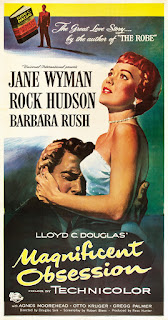Best Pictures #29:
1929-30 (3rd) Academy Awards
My Pick for
Outstanding Production
The first time in which all Academy members voted on the
selection of nominees and winners, instead of a 5-member selection board
as with the first two awards ceremonies, was at the 3rd Academy Awards. The ceremony was held in November to be closer to the end of the
qualifying year (August 1st, 1929-July 31st, 1930).
Though still in its nascent stages, the Academy Awards at this time already
feels like the modern awards. There were 5 Best Picture nominees (then called
Outstanding Production) that included a big budget epic, a feel good musical
romance, a historical biopic, a sociopolitical drama, and a daring portrayal of
adult relationships.
The films themselves feel as though they have come a long
way since the switch from silent to sound just a couple years prior. The sound
quality of all of the nominees is greatly improved from the 2nd Academy
Awards nominees—the sound quality of which depended on how close the actors
were to a hidden microphone. Improvements with camera and microphone technology
meant that actors did not have to huddle around that hidden microphone and the
camera did not have to be far away and motionless—in some cases sealed in a
soundproof booth—so the microphone would not pick its noises. The camera and
actors could move more freely which allowed for more interesting cinematography
and staging. There is still that ambient hiss that pervades throughout early
sound films, but there’s no need to crank up the volume. Every sound in these
films is clearly audible and the sound design and effects are used to help and
enhance the story, not just dazzle the audience as a novelty. These films
seem to have learned that dialing back on sound and using just images is still
as effective as it was with silent movies. All
Quiet on the Western Front, The Big
House, The Divorcee, and The Love Parade all have memorable scenes
which use the lack of dialogue for effect on the audience. The sound quality of
movies with outdoor scenes is greatly improved from the 1st outdoor
talkie, In Old Arizona. With these
films sound is now just another element of movies, like costumes and music. It
works in the background to help tell the story. The silent era was now indeed
just that, an era with beginning and end dates. There were not “talkies”
anymore, there were only movies.
The films of this qualifying year seem to be more aware of
and willing to deal with social issues. Every film from the birth of sound
until the summer of 1934 is a Pre-Code film, made before the enforcement of the
Hays Code which strictly regulated the content and subject matter of films. All Quiet on the Western Front and The Big House make their audiences
confront the realities of groups of people society sends away and doesn’t think
about too much afterwards. I can understand why the Academy voters selected All Quiet on the Western Front as the
Outstanding Production of that year. The Great War was a major event that still
weighed large on that generation. It was a daring portrayal of war that mass
audiences likely had not seen and showed what veterans likely would not readily
share. It is a fine classic war film, though dated, but I would cast my vote
differently.
My Pick for Outstanding Production of 1929-30: The Divorcee(1930)
The film from this group of Outstanding Production nominees
that I would most want to see again and would most readily recommend to anyone,
classic film fan or not, is The Divorcee.
The best thing about the film is its main character, Jerry, and Norma Shearer’s
Oscar winning performance. I do not think the film judges Jerry for “living it
up” after her divorce or for not waiting for men to come to her, but it does
treat that behavior as an aberration. Jerry never becomes immoral, she only
wants equality. Having a character like this as the star of a movie, no matter how
the film ends, is an accomplishment of sorts. Another accomplishment The Divorcee makes is finding the right
balance between social consciousness and entertainment.
The Divorcee
begins and ends as a romance, has drama in between, and never
feels uneven. Whether with fun scenes of lavish parties or serious scenes between Jerry
and her sister, the film maintains a steady pace. The male characters that
surround her (Ted, Don, and Paul) are entertaining characters as well. The
comedy in The Divorcee certainly holds up and, along with the performances,
makes it a lively film. Certain camera shots and sequences keep it visually
interesting too.
A modern viewer might be disappointed in The Divorcee’s view of divorce as an
unacceptable social ill, but I also think a modern viewer will be far more
sympathetic and understanding of Jerry and her actions. The film does not take
a stand against double standards and unfairness and inequality toward women,
but in simply acknowledging that such things existed The Divorcee was bold and daring for its time. Its values may be
dated, but The Divorcee is no less
entertaining.
























